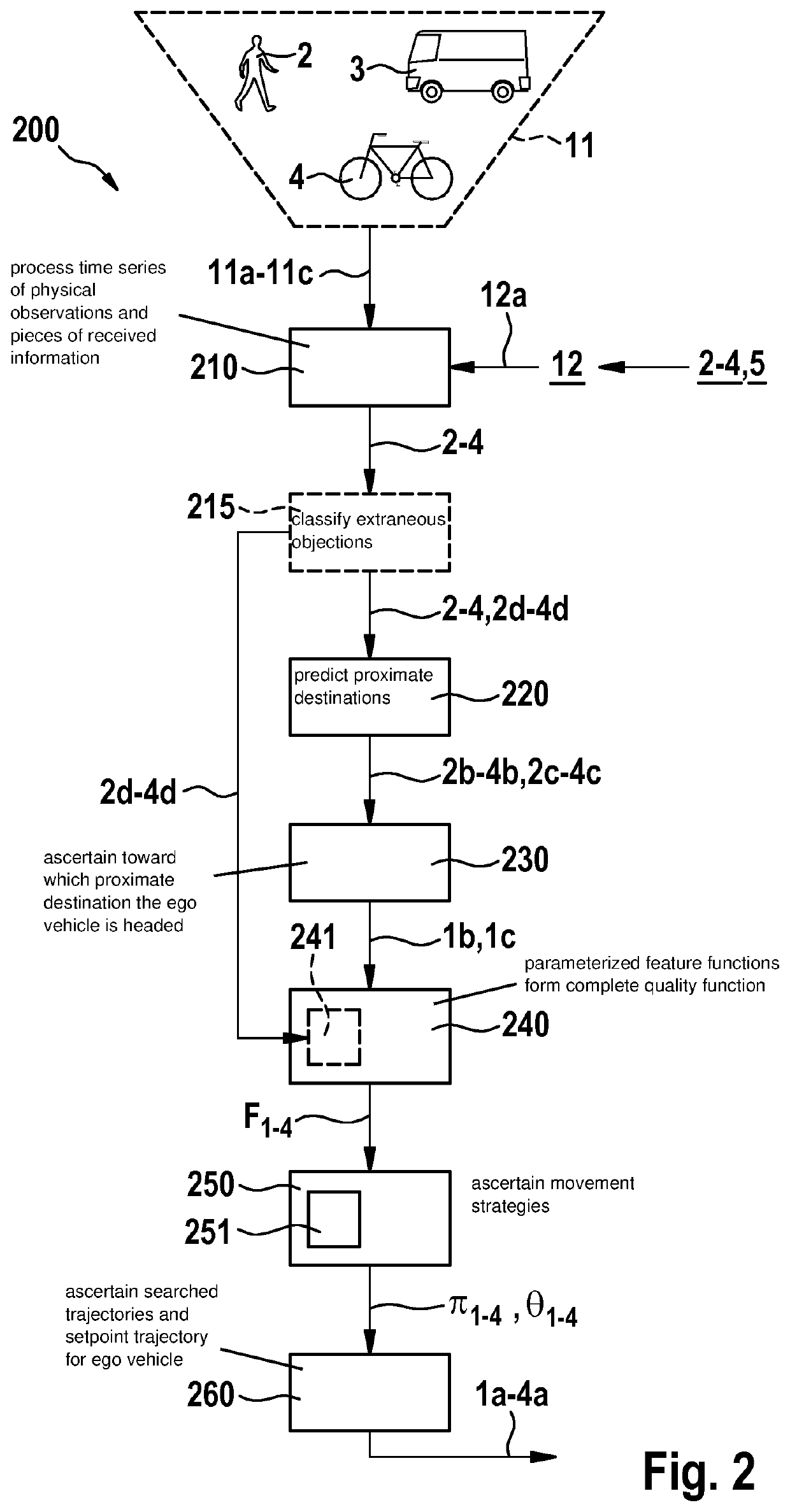Adaptation of the trajectory of an ego vehicle to moving extraneous objects
a technology of trajectory planning and ego vehicle, applied in scene recognition, instruments, transportation and packaging, etc., can solve the problems of uncontrollable or only partially controllable extraneous objects, inability to fully consciously carry out driving tasks, and complex driving tasks. to achieve the effect of improving the driving fitness of vehicles
- Summary
- Abstract
- Description
- Claims
- Application Information
AI Technical Summary
Benefits of technology
Problems solved by technology
Method used
Image
Examples
Embodiment Construction
[0050]FIG. 1 shows one exemplary embodiment of method 100. In step 110, a time series 11a through 11c of physical observations of surroundings 11 of ego vehicle not delineated in FIG. 1, together with pieces of information 12a that have been received via wireless interface 12, are processed. These pieces of information 12a originate from extraneous objects 2 through 4 in vehicle surroundings 11 itself, and / or from an infrastructure 5. In step 110, extraneous objects 2 through 4 are identified, i.e., it is established that three extraneous objects 2 through 4 are present, which move in different ways.
[0051]Extraneous objects 2 through 4 are classified in optional step 115 according to types 2d through 4d. In step 120, each of proximate destinations 2b through 4b tracked by extraneous objects 2 through 4 is predicted and the basic rules 2c through 4c are ascertained, according to which the movement of extraneous objects 2 through 4 occurs. Similarly, it is ascertained in step 130 towa...
PUM
 Login to View More
Login to View More Abstract
Description
Claims
Application Information
 Login to View More
Login to View More - R&D
- Intellectual Property
- Life Sciences
- Materials
- Tech Scout
- Unparalleled Data Quality
- Higher Quality Content
- 60% Fewer Hallucinations
Browse by: Latest US Patents, China's latest patents, Technical Efficacy Thesaurus, Application Domain, Technology Topic, Popular Technical Reports.
© 2025 PatSnap. All rights reserved.Legal|Privacy policy|Modern Slavery Act Transparency Statement|Sitemap|About US| Contact US: help@patsnap.com



